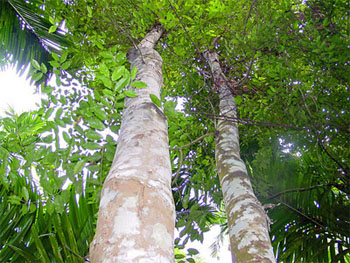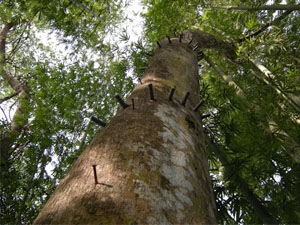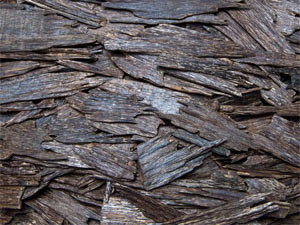|
|
All About Agarwood Oil, Including Cultivation, Production and Conservation
|
|
|
|
|
|
 |
The most expensive wood in the world, agarwood, also known as oud and aloeswood, is the name for the dark and aromatic resin-suffused wood formed in species of Aquilaria, Gyrinops and Aetoxylon trees. Of these three, species of Aquilaria are generally considered to be the greatest producers of high quality agarwood. Fairly widespread, these tall evergreens span across the majority of south east Asia. With more famous and sought after species presiding in North-East India, Cambodia and Thailand, they can also be found in Laos, Japan, Hawaii and Australia.
Agarwood is formed when these trees are exposed to, and infected by, a parasitic fungus. This fungus enters through a wound in the trunk and quickly spreads, infecting and eating away at the tree. To combat this, the tree begins to secrete a very special and fragrant resin that works to slow the growth of the fungus and ultimately heal the tree.
|
|
This resin soaked wood is agarwood: one of the most famed and precious substances in nature. The worth of fine agarwood greatly surpasses sandalwood, deer musk and even pure gold.
As a fragrance agarwood can differ massively, with the key factors being the age of the tree, level of infection, region and the skill of the distiller. It can be sweet and playful with shadowy fruit notes, woody and earthy with hints of crushed foliage or deeply animalic, exuding an ethereal and intoxicating musk. Fine agarwood oil can last for a whole day, hovering around your person, gently melding and shifting with the natural scent of your skin to produce its own subtle personality.
|
|
|
|
|
|
|
The Cultivation Process |
|
|
 |
The production of cultivated agarwood usually begins at the artificial inoculation of the tree. This is where wounds, usually very small in size, are drilled into the trunk. Although there are several different ways to help ensure the infection of the host, the most reliable and effective methods usually involve the insertion of foreign materials, such as small pieces of bamboo. This works to limit the healing capabilities of the tree. Sometimes narrow plastic and rubber shunts are also inserted, through which agitating fungus or bacteria can be introduced.
After the initial inoculation the farmer has to ensure that, until the time's right for harvest, neither tree or fungus win the struggle. This causes the tree to continue its resin secretion and increase the total yield. Some more infected branches or sections of the tree may be cut away early and stored in order to keep the host plant in better health.
|
|
This can be massively time consuming given that some plantations have hundreds if not thousands of trees. Even a large and dedicated workforce is hard-pressed to ensure the ongoing optimal levels of infection and care to every tree.
Fortunately, some of our farmers have come up with an ingenious method to help them achieve this. They inject and slather an infected tree with honey to attract ants and a variety of similar insects. Once these goldmines of sugar have been discovered, the ants set up long supply trails and thoroughly search the tree. During this search, the ants are unknowingly aiding in the spread of fungus. Honey is then applied to healthy trees. As the insects travel from tree to tree in search of more honey, transmission of the fungus is enabled. Their boring pincers also serve to further agitate the host. This is as close to natural infection as can be achieved in cultivated wood. In the wild, burrowing insects are one of the main causes for infection. |
|
|
|
|
|
|
Harvesting |
|
|
 |
Agarwood is most commonly harvested by the felling of the tree once it's believed to contain agarwood. Another method is to only harvest the infected and resinated parts of the tree. This allows the rest of the tree to recuperate and heal itself for future harvests. This second method can offer a greater total yield, albeit at a slower rate. After a harvest, the wood is examined and evaluated.
Evaluation is based on the level of resin, scent, colour and texture. The paler and less fragrant chips are often carted off to be hydro distilled into agarwood oil, with the darker and more resinated pieces being ground into agarwood chips for incense and straight burning. Especially high quality or "sinking grade" agarwood, named so for its density, is becoming an increasing rarity. This means that when people do find wood like this, it's seldom distilled for oil or burned. Capable of holding onto its animalic and primal fragrance for decades, it goes to carvers and artists to be whittled into beads and statues that can be enjoyed for years.
|
|
|
|
|
|
|
|
Conservation |
|
|
Although agarwood occurs naturally in tropical forests all over the world, it requires quite a limiting set of conditions to be met. A recent survey estimated that only 7% - 10% of agarwood producing trees in the wild ever become infected with this fungus and begin resin secretion. This small amount of agarwood, although sometimes incredible in quality, simply isn't enough to satisfy global demand.
It can also be very difficult to properly determine the level of infection and ultimate quality of this wild wood. This has seen the indiscriminate felling and harvest of plants worldwide, causing 17 species of agarwood producing trees (Over 50%) to join the IUCN (International Union for the Conservation of Nature) endangered list.
The uncertain and unreliable future of wild agarwood has led to a massive increase in the production of cultivated wood, where trees can be artificially inoculated and their infection rate carefully monitored. Although this cultivated wood can often be younger and less infected than its wild counterpart, there are some truly expert farmers out there capable of producing agarwood chips and oil indistinguishable from what you'd find in the wild.
Don't let another species fade away, buy organic cultivated agarwood oil and help support the future of these incredible trees. |
|
|
|
|
|
|
Our Agarwood Oils |
|
|
Although we're against animal products in perfumery, there are some scents that are widely regarded as the most incredible and heavenly aromas to a perfumers palette. These scents are: ambergris from the sperm whale, civet paste from the civet, castoreum from the male beaver and musk from the Himalayan musk deer. Bizarre as a stand alone thought and revolting in high concentrations, it is said that without these materials there would be no true perfume. We disagree.
Unlike any of the aforementioned scents, which all have a very distinct appeal, agarwood oil can be anything and everything a perfumer wants it to be. It can be leathery, musky and sensual, like castoreum and deer musk, feminine like civet paste or even sweet and faecal like ambergris. It can have fruity notes, earthy notes and floral notes. The beauty of good agarwood is only limited by the skill and experience of its distiller.
Our artisans distilled their first bottle of pure agarwood oil in 1816. Now, seven generations on, they stand amongst the most experienced and sought after distillers in the world. That said, even the best distiller can only produce the best oil with the best wood.
Our agarwood oil is only crafted from organically grown trees with each distillation the produce of a single plant. This wood and its level of infection is thoroughly inspected before anyone picks up a saw. If it passes our checks, the wood is sent to our distillation plant, where it's split into small logs and ground into rough chips. This process continues until it is a coarse powder. We soak this powder in a barrel of mineral water for around two weeks. This is a common practice for increasing the total yield. The soaked wood is then scooped into large copper distillation tanks, along with some of the water it was soaked in, and boiled. The length of the distillation process can vary greatly and relies heavily on the experience of the chief distiller. When the distillation is finished, the oil is carefully separated from the water and bottled. This oil can be brilliant shades of chestnut brown, dusky red, warm amber and even verdant green. Too thick to spray, you gently swipe this velvety oil across your skin.
|
|
|